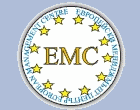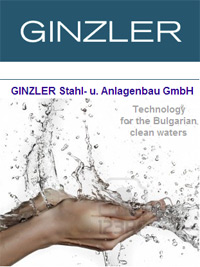- EU Projects
- Events
- Gallery
- EMC Contribution Development
- Sales and Communications Department
- EMC supports and participates in valuable initiatives
- High Profile Management Knowledge
- Innovative Management
- EMC Management Abroad
- EMC Consultancy Team
- EMC Terms & Conditions
- EMC In House Principles
- Bulgarian Austrian Management Club
- Bulgarian Austrian Relationship Acknowledgement
News
23/01/2024Contact seminar for Logistics in Vienna
22/01/20242nd workshop in Bruges, Belgium:
Newsletter
Here you can register for our Newsletter.
.gif)

![]()
Is a method developed by the Soviet engineer Genrich Altshuller and his colleagues in the 1950s. It is a tool set to help generate new ideas and solutions based on algorithmic patterns rather than random idea generation. TRIZ was initially developed for the field engineering as a method for inventing and problem solving but can be applied to many other technical and non-technical fields. The idea behind TRIZ is that, in order to solve a problem one must look at similar problems and their solutions and from there come up with a solution pertaining to the specific problem.
![]()
There is a terminology set that is associated with TRIZ. The Ideal Final Result (IFR) is the most desirable solution to a problem, where the result is achieved by itself. Each problem is associated with a set of contradictions, meaning if there is more of something that is desirable there is also more of another thing that is undesirable or less of something else desirable. These contradictions can be administrative (needs vs. abilities), technical (characteristics of the technology needed) or physical (issues in the physical requirements for an object). The latter are usually resolved by the separation principle which separates requirements that conflict with each other. The VePol or SuField is the basic technical system used that has two “substances” (“transmission” and “tool”) and a “field”, which is the source of energy. In the case where the substances are ferromagnetic, this system is called FePol.
![]()
TRIZ incorporates different tools that can be used in problem solving. One such tool is the use of contradictions. Identifying such and inventing ways to eliminate those leads to the solution of the problem. To facilitate this, Altshuller developed a set of 40 inventive principles and later a Matrix of Contradictions. In this matrix rows indicate 39 system features that one would want to improve with columns referring to common problems. Each cell then indicates principles that have been used most to resolve the possible contradictions.
![]()
Another tool of TRIZ is the Laws of Technical Systems Evolution, which were developed as a set of trends based on how technical systems have been developed and improved in the past that would help engineers improve their own products.
The Structural Substance Field Analysis (SU-Field Analysis), another part of TRIZ, creates a model of the initial system, provides its characteristics and, using a set of laws, and creates the model of the problem. In this way a structural solution that eliminates the problem is created. Another technique is the substance-field analysis which implements resources that are not currently used but are within the system or nearby it in the solution of the problem.
In the case where none of these techniques can be used, ARIZ, or Algorithm of Inventive Problem Solving, can be used. It consists of about 85 step-by-step procedures that combine different methods of TRIZ. It consists of the program, information safeguards, which are provided by the knowledge base, and methods for the control of psychological factors.
Using the different tools both known and unknown types of problems can be solved using TRIZ. The known, or standard ones, are solved using the knowledge base while for the unknown, ARIZ is implemented. Currently, there are computer programs developed that work based on TRIZ to provide problem solving assistance to engineers and inventors.
![]()






.png)

.png)










.png)